Haven House Systems
Water System
Water Cycle
When water evaporates from the earth’s rivers, lakes and oceans, the resulting warm, moist air rises up until it cools in the higher atmosphere and rain or snow is formed. The precipitation falls to earth, directly re-entering those same bodies of water or falling onto the ground where it runs off through streams and rivers to ultimately reach the sea. All the while, the water is subject to the ever-present action of evaporation as this water cycle begins again.
Just as the earth has a water cycle, so does the Haven House. The water enters the Haven House from a number of potential sources: municipal water, rainfall, wells or hauled water, where it is stored either in the raw water storage tank or, particularly in the case of municipal water, in the potable water storage tank. After the water is collected, it is processed to or above health code standards (see “Water Care Page”) and stored in the potable water storage tank. To avoid stagnate water in the storage tank, the potable water is continually circulated over the waterfall to aerate the water as well as to irradiate it with either UV rays from the sun or from a UV purification system. An automatic float level switch in the potable water tank activates the established purification process to draw water from the raw water storage tank and to treat it in order to maintain the potable waterstorage tank’s water level.
As the potable water is being used, every effort is taken to reclaim as much water as possible. The “gray” water from the Haven House’s sinks and interior drains is collected and treated with filters and UV irradiation to be re- used for exterior irrigation. The use of composting toilets will preclude any “black” water in the system.
Water Treatment
Water care for the Haven House varies with the source of the water, water quality, water consumption, water usages, and water re-use requirements. Some water just springs up out of the ground perfectly safe to drink per health department standards. Other water may need to be screened, filtered with GAC (granular activated carbon), filtered through a RO (reverse osmosis) membrane, irradiated with pathogenicidal UV light, infused with ozone, or treated with some combination of the above in order to meet safety standards. Re-cycling gray water as a supply for exterior irrigation might require some of the above features, particularly UV treatment, depending on state and local codes.
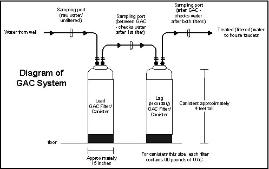

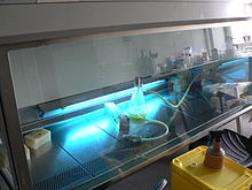
Links: GAC Filters Explained, Reverse Osmosis Explained , UV Irradiation Explained
Files: water treatment using, reverse osmosis, pura whole house, plumbing schematic
Miscellaneous Water Uses
The Haven House utilizes water for a number of non-consumer purposes such as irrigation/fire protection, heating and cooling loops in the floors, as a medium to raise fish and to carry fish fertilizer from the fish tank to the hydroponic tanks, and as ballast to lower the structure’s center of gravity or, in certain situations, to combat floatation.
The interior fire protection layout of the Haven House doubles, in certain areas of the structure, as an overhead irrigation system. The exterior fire protection nozzles located evenly at eight places around the structure can be used to wet down the Haven House’s adjacent landscape for irrigation or to prevent approaching fires from getting too close. These nozzles also double as purge nozzles when the water tanks need to be drained for maintenance or when structural floatation is desired.
Heating and cooling loops in the floors of the Haven House are depicted on the “Plumbing Schematic” as well as described on the “HVAC system” page.
When heating is desired, hot water is pumped from the hot water storage tank through conduits in the floors. When cooling is required, cool water is pumped up from the lower water storage tank into the same conduits.
The Haven House’s fish tank can be seen both as an architectural feature, and as a place to raise one’s own fish. An added benefit of the fish tank is the utilization of the fish droppings for fertilizer by routing the fish tank’s fertilizer laden solution into the support tanks of hydroponic gardens.
Whether it’s desirable to consume it, heat or cool the Haven House with it, to provide irrigation to its vegetation, to generate fish and fish fertilizer, to combat fires and floods or to provide or take away ballast in extraordinary times, water is an indispensable component

Mechanical & Electrical Systems
Mechanical Systems
The Haven House has many mechanical features, some standard, some optional. Unless it is unavailable, each Haven House comes standard with municipal power, water, natural gas, and sewage hook-ups. Except for power, these hook-ups are equipped with self-sealing disconnects.
To address short-term power outages and temporary losses of municipal water service, a stand-by electricity generator and a water storage tank also come standard. Other standard features are a fire sprinkler system, a rain collection system, a water filtration system, and an HVAC (heating, ventilation, and air conditioning) system. Optional features include overhead coiling sun and storm shutters, solar panels, retractable glass walls with screens, and waterless toilets
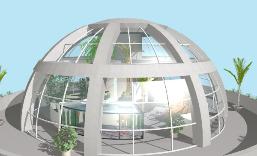
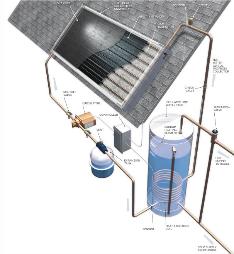
Plumbing
The
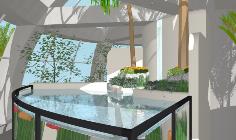
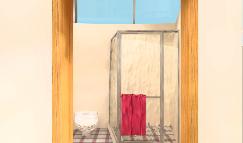

HVAC System & Multi-Fuel Boiler
Passive solar features and hydronic zones heated by solar panels backed up by a multi-fuel boiler provide the heat for the Haven House. Water is circulated through heat exchangers and the heated water is then pumped through an array of tubing in the floors of occupiable spaces. The boiler also stands ready to provide hot domestic water and steam for the steam room. Cooling is accomplished by pumping water up from the lower storage tank (where the water temperature can be as low as 50 degrees Fahrenheit) through the same array of tubing.
Also, intake louvers below the balcony supply cooler air to replace the hot air that is vented out through dampered louvers at the top of the structure. Overhead coiling shutters in front of the glass walls and windows permit the lowering of shades to prevent sun-drenching. These same coiling shutters, when insulated, provide the window areas with R-19 capabilities. Glass walls on the main floor of the Haven House are retractable to allow cross breezes through the screen walls that can remain in place or be slid sideways for a wide open space.
Solar Panels
Link?

